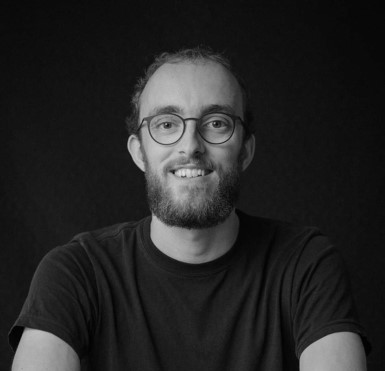Danish master's thesis contributes to international research in soil carbon storage
How do soil microorganisms utilize carbon from plant residues and other organic compounds? This was the question Lasse Busk Holm sought to answer in his 30 ECTS master's thesis in Agro-Environmental Management at Aarhus University. His research is linked to agriculture’s potential to store carbon in the soil through different cultivation practices, thereby helping to mitigate the increase in atmospheric CO₂ levels.

Carbon Use Efficiency (CUE): A key factor
Carbon Use Efficiency (CUE) is a measure of how efficiently soil microorganisms utilize carbon to build new biomass. It reflects the balance between two processes:
-
Carbon combustion: Microorganisms use part of the carbon for energy, which results in the release of CO₂ into the atmosphere.
-
Carbon incorporation: The remaining carbon is used to build the microorganisms' own cells, thereby forming new biomass.
A high CUE means that microorganisms incorporate more carbon into their cells while emitting less CO₂. This is beneficial because it leads to lower CO₂ emissions and more carbon being retained in microbial biomass within the soil.
Recent research suggests that the most stable carbon in soil originates from microbial biomass residues. Therefore, a high presence of microorganisms with high CUE can help increase stable carbon levels in the soil, which is crucial for long-term carbon storage and reducing CO₂ emissions from soil to the atmosphere.
The impact of research
If microbial activity in agricultural systems can be influenced to achieve higher CUE, it may enhance soil carbon storage and reduce CO₂ emissions in the long run. Lasse Busk Holm investigated this in his thesis, Microbial carbon use efficiency: concept, quantification, and role in carbon sequestration in agroecosystems, which he defended in the summer of 2023.
Following his graduation, Lasse Busk Holm was invited by his supervisors to participate in an international collaboration on CUE. Together with researchers from France and other countries, he contributed to summarizing existing knowledge on CUE and exploring ways to improve measurement methods and models in the future. His extensive literature review conducted for his thesis proved invaluable in this process. The collaboration involved discussions and manuscript exchanges among researchers, providing insights into how scientific publications can be strengthened through close cooperation. The result was a completed paper, now published in Nature Communications.
“Globally, CUE is still poorly understood. The challenge lies in developing precise models to predict CUE, as measurement methods vary and climatic, soil, and biological factors influence results,” explains Lasse Busk Holm.
The Danish perspective
In addition to contributing to the general understanding of CUE in soil ecosystems, Lasse Busk Holm’s thesis also included a specific analysis of how reduced tillage affects CUE. His research examined whether existing studies indicate that microorganisms exhibit higher CUE in systems with minimal or no tillage. No-till farming is part of Conservation Agriculture and regenerative agriculture, both of which are gaining increasing interest and adoption in Denmark.
Through an extensive review of scientific literature, screening over 1,000 articles, Lasse Busk Holm identified six studies with 17 relevant comparisons. To make the findings more accessible, these results were rewritten into a manuscript and submitted to a scientific journal. However, the initial feedback was critical.
“We were asked to conduct a more comprehensive analysis of the data,” he explains. “This meant reviewing over 4,000 articles, including newly published studies since my thesis.”
The expanded analysis confirmed the findings from his thesis: cultivation methods with reduced tillage appear to increase microbial CUE. Data analysis from 11 studies with 50 comparisons showed that CUE was 12% higher in soils under reduced tillage compared to conventional plowing. According to researchers, this improvement is likely due to better nutrient accessibility and shifts in microbial community composition.
Although the study found a higher microbial CUE, it did not establish a clear correlation with increased soil organic carbon content.
“Our analysis could not document a direct link between higher CUE and greater carbon storage,” Lasse Busk Holm states. “It appears that carbon sequestration depends on various factors such as climate, soil type, and plant production.”
The new study, now published in Journal of Sustainable Agriculture and Environment, concludes that further research is needed to better understand how increased CUE affects carbon storage—particularly in reduced tillage systems. While many questions remain unanswered, the master's project stands as a remarkable achievement that has led to two scientific publications.
“I think I was fortunate to delve into a highly relevant topic,” says Lasse Busk Holm, adding that he learned a great deal from the subsequent process—particularly how strong international and Danish collaborations contribute to solid scientific results.
More Information
Read more: The two publications can be accessed here: Emerging multiscale insights on microbial carbon use efficiency in the land carbon cycle and Improved microbial carbon use efficiency with low tillage intensity: evidence and research gaps.
Supervisors: The thesis was supervised by Professor Lars Elsgaard and Assistant Professor Zhi Liang, both affiliated with the Department of Agroecology at Aarhus University.
Contact: Lasse Busk Holm, Department of Agroecology, Aarhus University. Phone: +45 20973779 or email: lbh@agro.au.dk.
